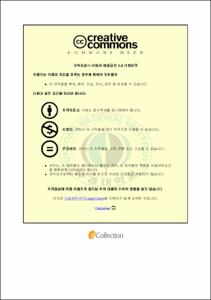한국어 학습자를 위한 연결어미 ‘-고’와 ‘-아서’의 교육 방법 연구
- Abstract
- This study aims to seek an education method that makes it easier and clearer for non-native Korean language learners to learn the correct usages of connective endings '-go' and '-aseo', which they often misuse without thorough understanding. It is assumed that the learners have difficulties in acquiring Korean connective endings due to the unique features the grammar system of Korean language has. To help them with the difficulties, this study suggests that it is necessary to examine what they learned previously when arranging the learning procedures of '-go' and '-aseo'.
To begin with, Chapter 1 makes the goal and the necessity of this study clear. Then it deals with why non-native Korean language learners cannot but have troubles in learning connective endings. It also shows that earlier studies on '-go' and '-aseo' insufficiently researched the education methods offering varied grammatical restrictions according to learners' prior learning.
In Chapter 2, Korean grammar dictionaries for L2 learners are analyzed : how they deal with the grammatical features of '-go' and '-aseo'. It is conducted based on Three-dimensional Grammar Framework by Larsen-Freeman(1995, 2001, 2003). This model regards grammar as functioning with the interaction among setting(situation, context) of language use, meaning, and form. From this point of view, the grammar dictionaries are investigated about how they explain form, meaning, and use of the two endings.
It reveals that they offer syntactic restrictions and usages limited to tense and mood though they properly explain the semantic functions of the two endings. In addition, some example sentences in the dictionaries are hard for learners as they include difficult words or long embeded sentences, and many sentences with the two endings, which indicate time order, have ambiguities in meanings.
Chatper 3 is about four different Korean language books that are published by affiliated institutions of universities and used as coursebooks for regular classes. It mainly deals with the learning procedures of '-go' and '-aseo' in those books and the way they explain the semantic relationships and offer the syntactic features of the two endings. The syntactic features mainly analyzed in this part are how the books describe three restrictions - tense, verb of preceding clause, and negative expressions - and how the restrictions are applied in texts and inflection exercises of the books. The analysis results in some strong and weak points of the books and they are reflected in the teaching-learning model suggested in the later part of this paper.
Chapter 4 suggests the teaching method that helps learners clearly perceive the syntactic restrictions of '-go' and '-aseo', considering the research results of chapter 2 and 3. That is, the suggested method differentiates the range of the syntactic restrictions according to learners' levels and their previous learning. That's because to deal with the two endings differently for beginners and intermediate learners helps them with better understanding of the target items. In this method, the complex functions of two connective endings are presented in turn as followings step1. coordinating '-go', step2. representing the relationship of the time sequence '-go' and '-aseo', step3. showing cause and effect '-aseo'. Besides, the teaching-learning model focuses on that learners practice complex sentences using the two endings based on enough exercises with simple sentences.
- Issued Date
- 2012
- Awarded Date
- 2012. 8
- Type
- Dissertation
- Publisher
- 부경대학교
- Affiliation
- 부경대학교 교육대학원
- Department
- 교육대학원 외국어로서의한국어교육
- Advisor
- 조미정
- Table Of Contents
- 목 차
Ⅰ. 서론 1
1. 연구의 목적과 필요성 1
2. 연구 방법 7
3. 선행 연구 10
Ⅱ. 연결어미 ‘-고’와 ‘-아서’의 문법적 특성 20
1. 의미적 특성 21
가. ‘-고’ 23
나. ‘-아서’ 26
2. 통사적 특성 28
가. 시제 표시 제약 29
나. 선행절 서술어 제약 29
다. 부정문 제약 31
Ⅲ. 연결어미 ‘-고’와 ‘-아서’의 문법 교육 33
1. 대학별 교재 분석 36
가. 경희대학교 『한국어』36
나. 고려대학교 『재미있는 한국어』38
다. 서울대학교 『한국어』40
라. 연세대학교 『연세 한국어』42
2. 종합 분석 45
Ⅳ. 연결어미 ‘-고’와 ‘-아서’의 효과적인 교육 방안 49
1. 연결어미 ‘-고’와 ‘-아서’의 문법 교육에 대한 제안 49
가. 연결어미의 제시 순서 49
나. 학습 단계별 제시 방법 54
다. 연결어미의 효율적 습득을 위해 선행되어야 할 점 55
2. 연결어미 ‘-고’와 ‘-아서’의 실제 수업 모형 57
가. 초급 58
나. 초급 후반부 또는 중급 63
Ⅴ. 결론 71
참고문헌 75
부록1 79
부록2 80
- Degree
- Master
- Appears in Collections:
- 교육대학원 > 외국어로서의 한국어교육전공
- Files in This Item:
-
-
Download
 한국어 학습자를 위한 연결어미 ‘-고’와 ‘-아서’의 교육 방법 연구.pdf
기타 데이터 / 4.47 MB / Adobe PDF
한국어 학습자를 위한 연결어미 ‘-고’와 ‘-아서’의 교육 방법 연구.pdf
기타 데이터 / 4.47 MB / Adobe PDF
-
Items in Repository are protected by copyright, with all rights reserved, unless otherwise indicated.